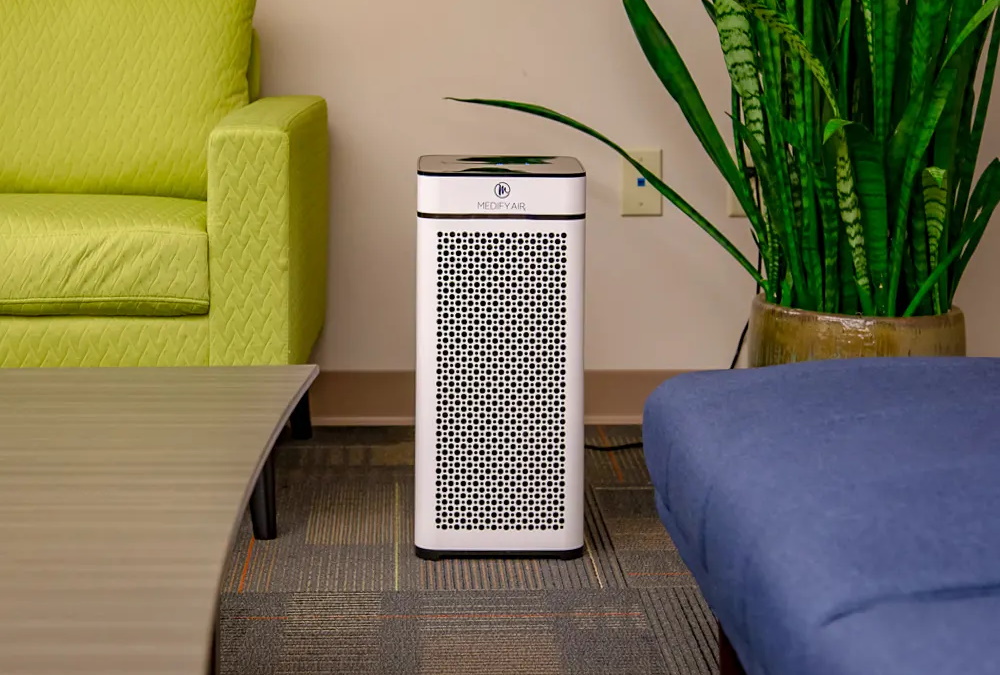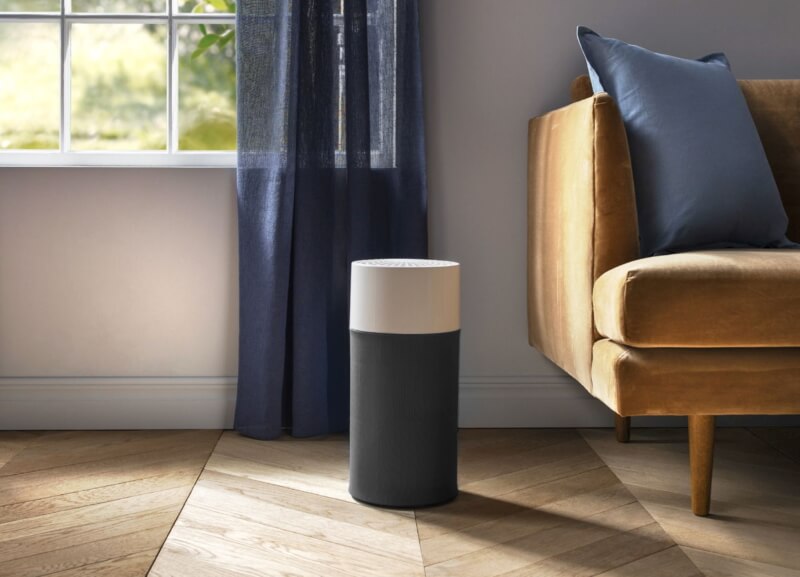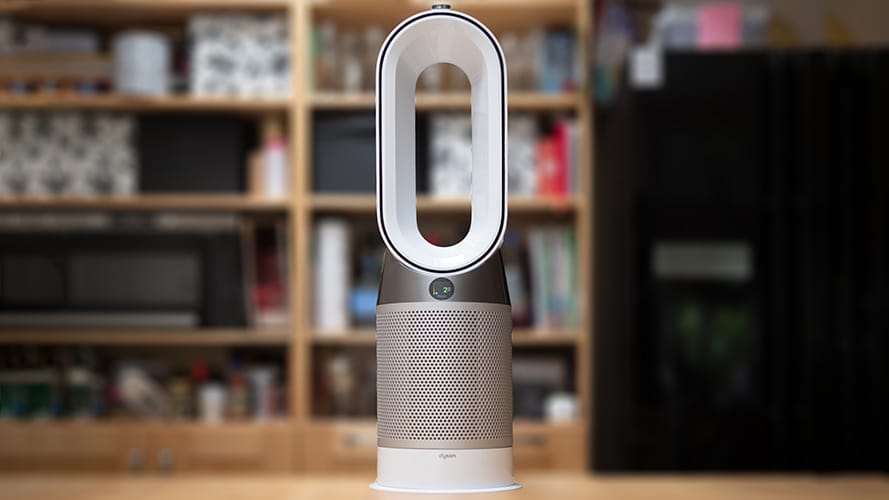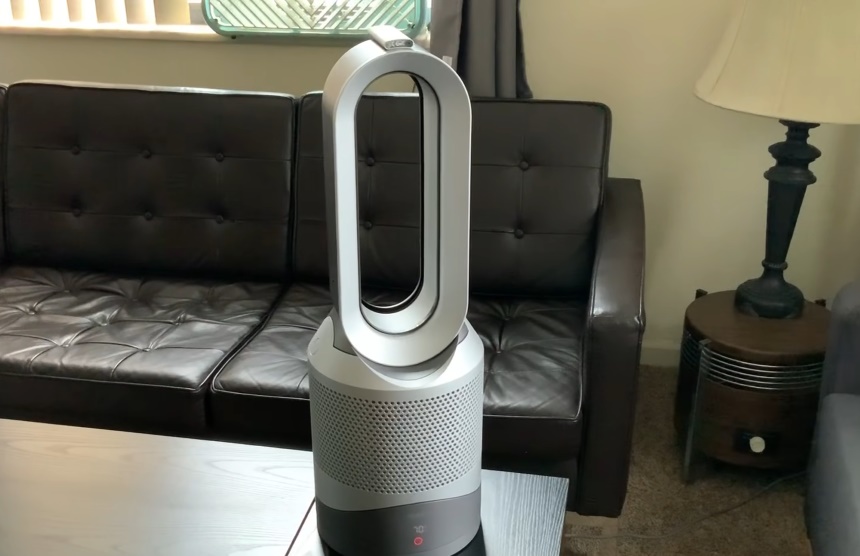

Depending on the security measures in place, your home ought to be your comfort zone and the safest place in the world. However, while advanced security systems can prevent a robbery and other similar hazards, they can’t prevent mold and dust from accumulating in your space and causing allergies. The only way to combat it is by purifying your home with the best air purifier for allergies.
Of course, thanks to the extra awareness that has been created for environmental pollution in recent years, air purifiers have become really popular. We’ve reviewed six of the best models out there, with the Medify MA-40 Air Purifier being the best of the bunch. Not only does it have a very large coverage, but it also operates in a very fast and efficient way. On top of that, it comes with four fan speeds, which makes it a very versatile machine. In short, none of the other models can match it in terms of performance and value.
As usual, our selection was aided by some important factors we took into consideration, which include the coverage area of each model, the type of filters they use, and their dimensions. We’ve invested tens of hours in this article, so we’ve made it as well-structured as possible. To achieve that, we’ve included and shrewd a comparison table, a comprehensive product-review section, and an insightful buying guide. To put it simply, everything has been designed to ease your shopping.
More features: 8-hour timer; night mode; tempered glass panel
We know that Medify is probably not a name you hear every day, but with a product like the Medify MA-40 Air Purifier, the company is set to become one of the most popular names in the industry. With a coverage area of up to 1,300 square feet, this air purifier from Medify is the best air purifier on our list. Apart from that, it also comes with four speed settings, which means you have complete control over how the air purifier operates. Furthermore, this air purifier is not only powerful in its operation, but fast as well.
Although some users believe that it can be annoyingly noisy, we think that that’s a small trade-off considering all the other things you will get to enjoy on this machine. Of course, the noise is not too much, but it could be a problem for people who can’t bear any kind of noisy while they sleep. Moving on, the machine comes with a built-in particle sensor which indicates the quality of your air. The fact that it has a tempered glass panel also makes it easy to clean and will prevent it from scratching.
For safety and to prevent your kids from tampering with the machine and the settings, the machine comes with a child lock. Plus that, it comes with an eight-hour timer, which ensures that the machine doesn’t overwork. Lest we forget, the machine uses Medical Grade H13 Filters, which are rated above true HEPA filters. It promises to get rid of 99. 97 percent of allergens, dust, mold, and more from your air.
More features: oscillates; doubles as a tower fan; Wi-Fi connected; certified by Asthma and Allergy Foundation of America, remote control
The Dyson Pure Cool TP02 is an elegant Wi-Fi connected fan that cleans your indoor air. An array of sensors analyze the air in your home and then takes steps to remove airborne contaminants. Although this fan can be fairly noisy at the highest settings it does work well. At the heart of this system is a HEPA filter that operates in a 360º rotation. You can connect to the TP02 via a dedicated app on your favorite mobile device and you have unparalleled control over the settings. The TP02 measures 40” high by 4.3” wide and it has a depth of 7.5”. The entire fan sits on a circular base with a diameter of 7.7” and feels sturdy with a total weight of 8.4 lbs. The fan is a bladeless model, it’s available in blue or silver colors and it’s easy to clean.
The Pure Cool Link can be controlled with simple controls on the unit or you can control it remotely or set it to automatic operation. The embedded control panel houses the power button and easy to navigate LED buttons with symbols. When a Wi-Fi pairing mode is connecting it flashes white and this turns to solid white when a connection has been achieved. When the air has been cleaned this white color changes to solid green and you can select different modes for day and night use. The remote control is a stick with mirrored controls and it can be stored magnetically at the top of the tower.
More features: CARB and FCC certified; ETL listed; change filter indicator
Of course, the Levoit LV-H133 Air Purifier is not our Editor’s Choice, but considering everything it packs and offers, it’s not far behind. Not only does it have a super-quiet operation, it is also one of the best large room models that can effectively get rid of smoke, odor, pollen, dust, mold spores, and 99.97 percent of toxic airborne particles as little as 0.3 microns. In addition, this model has been certified by ETL, FCC, and CARB for energy efficiency and safety. In terms of coverage area, it can purify up to 538 square feet at a time.
Furthermore, the Levoit LV-H133 is equipped with a true HEPA allergen air filter, a pre-filter, and high-efficiency activated carbon filter. This activated carbon filter uses cyclone technology to clean air drawn from every side of the device at a 40 percent higher airflow rate and volume than other models on the market. Apart from featuring a brushless motor, this model also comes with an intelligent sensor that shows real-time quality of air, monitors airborne impurities and automatically picks the most ideal fan speed. Lest we forget, the machine comes with three different fan speeds.
Another thing is that this model allows you to schedule the operation’s interval by setting the built-in timer from one to twelve hours. Not only that, but you can also turn off the LED display and activate Sleep Mode to reduce the noise of the machine at nights. This allows you to sleep peacefully at night without being perturbed by any noise from the machine. The only odd thing about this machine is that it comes with an initial strange smell, albeit one that will go away after a couple of days or weeks, at most.
More features: UV-C light; Energy Star certified
Except if you’re new to the world of allergy air purifiers, then Germ Guardian is a name you must be familiar with, especially when considered that this is one of the best GermGuardian air purifiers. The company is one of the frontrunners when it comes to the manufacturing of high-quality air purifiers and their incredible expertise is on display again here. Even though the Germ Guardian AC4825 Air Purifier is not ideal for everyone due to its small coverage area, its sheer quality is obvious for everyone to see.
Equipped with a HEPA filter, this machine is capable of capturing 99.97 percent of the household allergens and dust. Apart from that, it also purifies the air from nasty odors. In fact, it also kills mold spores, germs, viruses, and bacteria, thanks to the built-in UV-C light technology which works with Titanium Dioxide. The machine also helps to reduce volatile organic compounds in the atmosphere, making it a perfect choice for allergy sufferers.
In terms of capacity, this unit is only capable of purifying up to 167 square feet, which is quite small if we’re being honest. It, however, offers three fan speeds to choose from, which gives you some control over its operation. Meanwhile, it’s important to note that there is an annoying initial smell that comes with the purifier. Of course, it will fade after a couple of uses, but it’s very strong and unpleasant while it lasts.
More features: can be used vertically or horizontally
Compactness and affordability don’t necessarily compromise quality, and the Hamilton Beach TrueAir Air Purifier perfectly demonstrates that. Despite being our Budget Pick, this unit comes with HEPA filters that are capable of removing up to 99 percent of airborne pollutants in a 140-square-foot room. Besides, this allergen air purifier has an airflow of 67 CPM, which is impressive given the compact nature of the unit. On top of that, this device also uses a one-stage filtration process that passes indoor air through the HEPA filter.
Another thing that a lot of people will like is that there’s no need to replace the filter ever. You will, however, have to vacuum the filter periodically to maintain optimal cleaning performance. The HEPA filter is made to catch include pet dander, dust mites, and mold spores, among others up to three microns in size. If we consider the affordable price of this unit, it shouldn’t be surprising that it hardly features any extra features. However, despite not coming with all the bells and whistles, it does what it’s designed to do well and effectively.
Another thing we must not forget to mention is the quiet operation of this machine. Noise isn’t a concern on this unit. If you are sensitive to noise, then use it on “Whisper Clean.” It makes no noise, but still puts out a decent amount of air. Of course, it’s not without its flaws, the first of which is the fact that the fan is placed inconveniently on the side. This means that it may blow the unfiltered air away before being drawn by the machine for cleaning. Also, the unit covers just 140 square feet, which is small.
More features: night glow; lockable controls
Babies are known to have a weak immune system, which is why you need to ensure that their nursery is always clean. If you have a baby room you want to purify, then you might want to consider the Vornadobaby Purio Air Purifier. Equipped with activated carbon filters, this air purifier is capable of absorbing all the odors in your baby’s room. Not only that, but it also features a HEPA filter, which helps to filter 99.97 percent airborne allergens such as pollen and mold from the air.
Furthermore, this compact machine has three airflow settings, which allow parents to have complete control over their baby’s environment. Plus, there is also a “sleepy time” setting that automatically makes the machine quiet when it’s dark. This way, the baby will be able to sleep peacefully without any disturbance. It’s also worth noting that the machine has a permanent, washable pre-filter, which prolongs the life of the HEPA filter. Meanwhile, the fact that the Activated Carbon filter absorbs the odors means the nursery will always be smelling fresh.
To ensure that the settings are left just the way you leave them, this air purifier has lockable controls, which prevents babies from tampering with the settings. Of course, babies love it when things glow, which is why the manufacturers have included a recessed lighting. This feature also alerts parents when the filter needs a replacement by gently brightening and dimming. It has flaws though, with the first of them being the lack of a good handle. Secondly, its coverage area is very small, yet suitable for an average-sized nursery.
If you suffer from an allergy, then an air purifier is likely to be your best friend. While it eliminates spores, dust, mold, and pollen, it also helps to get rid of tobacco smoke, smoke odors, or wildfire smoke in your home. However, since not every model is capable of capturing every kind of airborne particles, you have to be very selective during your shopping.
Over 50 million Americans experience different types of allergies every year, according to Asthma and Allergy Foundation of America. Meanwhile, an allergy is capable of causing death, if not taken care of. It’s also worth noting that allergies cost more than $18 billion every year, which is a lot.
If you’re on this page, there are chances that you’re suffering from one kind of allergy. In that case, you must have researched for a lot of methods or solutions to reduce or cure your allergies. While allergies usually don’t have a cure, they usually can be prevented. One of the most recommended methods of preventing allergies is using the best air purifier for allergies, and if you suffer from asthma, you can have a look at the best air purifiers for asthma alleviation.
The majority of the things that cause allergies are from airborne pollutants. And of course, you can use an air purifier to combat this. Keep in mind that the cleaner the air you breathe in, the better and healthier your life will be.
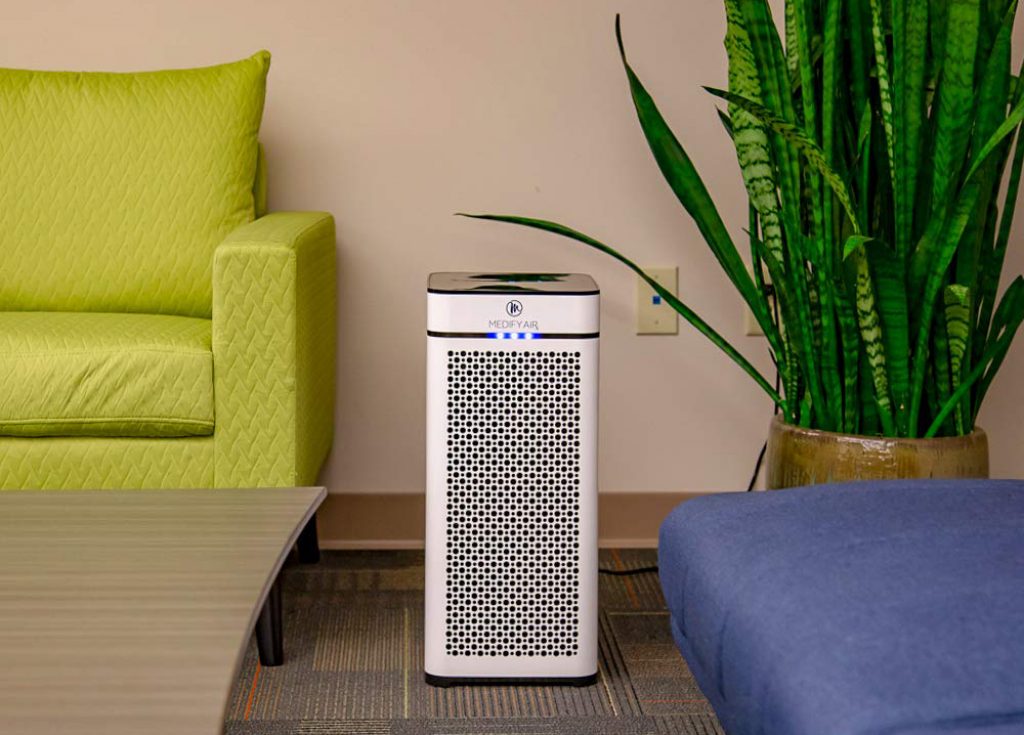
Generally, you will want to find an air purifier that utilizes a true HEPA filter. Professional groups and government agencies, which include the American Lung Association and the EPA, recommend these filters as the ideal for air purification. True HEPA filters are capable of trapping 99.97 percent of particles that are 0.3 microns at least in size.
Some air purifiers are equipped with HEPA-type filters, which work in a similar way but aren’t believed to perform as high. Meanwhile, our Editor’s Choice, the Medify MA-40 Air Purifier uses Medical Grade H13 Filters, which is in some quarters believed to be better than true HEPA filters.
Also, your air purifier is likely to come outfitted with a pre-filter that captures the big stuff such as human hair and pet fur before it gets to the primary filter. Some air purifiers come with extra filters such as charcoal or carbon filter, which capture gases, odor compounds or VOCs.
As you might have thought, the coverage area is the amount of space that your air purifier is capable of cleaning without getting overloaded. In the event that you want to save some money, then it’s reasonable to measure the space you want to purify and buy a model accordingly. That’s because the larger the coverage area, the costlier it will be.
However, if the cost isn’t a problem, then it’ll be more reasonable to buy an air purifier that is capable of covering more area than you actually need. With that, you will have a guarantee that the machine you select will be capable of handling your area without any problem.
Also known as the Clean Air Delivery rate, CADR is a number that allows users to understand the effectiveness of their device in a particular room size. Therefore, the higher the CADR number, the more particles your purifier is capable of removing, and the larger the area it’s capable of cleaning. Some air purifiers have different CADR ratings for dust, pollen, (the largest particle) and for smoke (the smallest particle).
However, bear in mind that not every model is tested with the CADR rating system, real-life reviews and feedback can provide you with an idea of the effectiveness of a device if a rating is unavailable.
Apart from the filter, there are other things that affect the performance of an air purifier. One of those things are the number of fan speeds. If you’re looking for a purifier that will perform based on the current quality of air in your room, find a model with multiple fan speeds. With that, you will be able to easily adjust the machine’s fan according to the quality of air in your room at a certain period. Boasting ten fan speeds, the Dyson Pure Cool TP02 is the best in this regard.
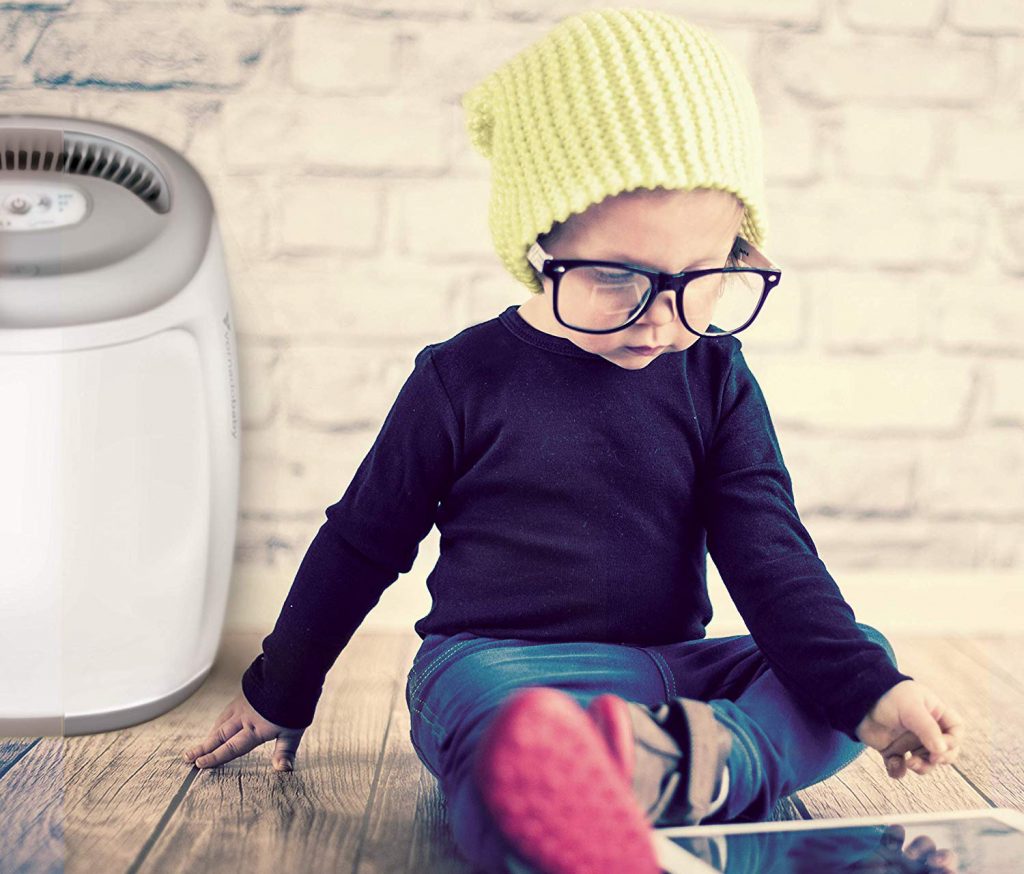
If you are the kind of person that can sleep in any kind of environment, regardless of the noise level, then this consideration might be deemed useless. However, if you can’t fall asleep when there’s too much noise, opt for an air purify that is quiet in its operation. Some quiet models on our list are the Levoit LV-H13 Air Purifier, the Vornadobaby Purio Air Purifier, and the Hamilton Beach TrueAir Air Purifier.
Another important consideration you need to think about is a filter change indicator. As you might have guessed, this indicator will warn you when your filter is due for cleaning or a replacement. Because some of the filters usually last for more than a year, it’s easy to forget about cleaning or changing it. This indicator will allow you to know when you need to change it.
It’s also important to know the dimensions of the air purifier you are looking to buy. It will allow you to determine whether your storage space will be able to accommodate the machine.
Also, the size will determine how portable the machine will be, making it easier to transport it from one room to the other.
There’s no assurance whatsoever that your machine won’t break down eventually. Therefore, if and when that happens, rather than getting rid of it, you might have to check the terms of the warranty that comes with it. Air purifiers are usually machines that last for a long time, so you need to make sure your machine comes with a two-year warranty at least.
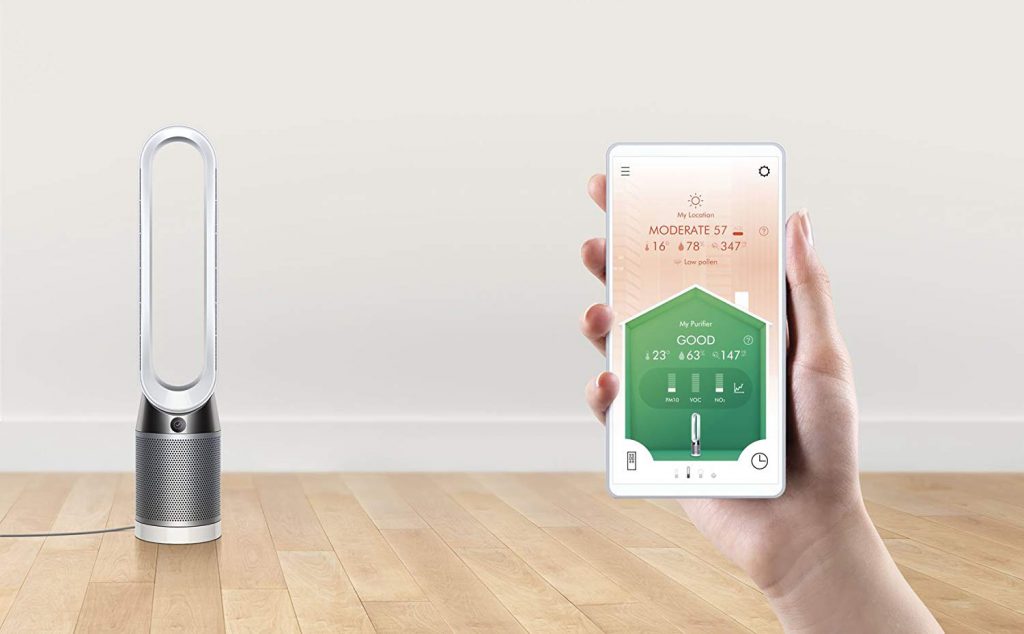
Another thing is that it usually depends on the brand, type, and model of the purifier, so we advise you to look for a guideline on your manual. Normally, you want to run it for around five to eight hours, since you can easily switch it on again after resting for some time.
It’s not every day you come across an air purifier that will cover 1,300 square feet while still being affordable. Well, you’ve just come across such a model in the Medify MA-40 Air Purifier. Apart from covering the largest space on our list, it also comes with four fan speeds, which gives you complete control over its operation. It’s the best air purifier for allergies that we know.
Moving on in our ranking, the Dyson TP04 Air Purifier and the Levoit LV-H133 Air Purifier come second and third respectively. While the Dyson model is unique because of the ten fan speeds it comes with, and mind you that even more Dyson air purifiers will help you to fight allergies, the Levoit is remarkable for its super-quiet operation. Of course, both models are also suitable for large rooms, which adds to their versatility.
